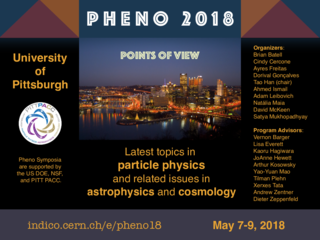Speaker
Description
We propose a novel method utilizing stellar kinematic data to detect low-mass substructure in the Milky Way’s dark matter halo. By probing characteristic wakes that a passing dark matter subhalo leaves in the phase space distribution of ambient halo stars, we estimate sensitivities down to subhalo masses ∼ 10e7 M_{Sun} or below. The detection of such subhalos would have implications for dark-matter and cosmological models that predict modifications to the halo-mass function at low halo masses. We develop an analytic formalism for describing the perturbed stellar phase-space distributions, and we demonstrate through simulations the ability to detect subhalos using the phase-space model and a likelihood framework. Our method complements existing methods for low-mass subhalo searches, such as searches for gaps in stellar streams, in that we can localize the positions and velocities of the subhalos today.
Summary
We propose a novel method utilizing stellar kinematic data to detect low-mass substructure in the Milky Way’s dark matter halo.

